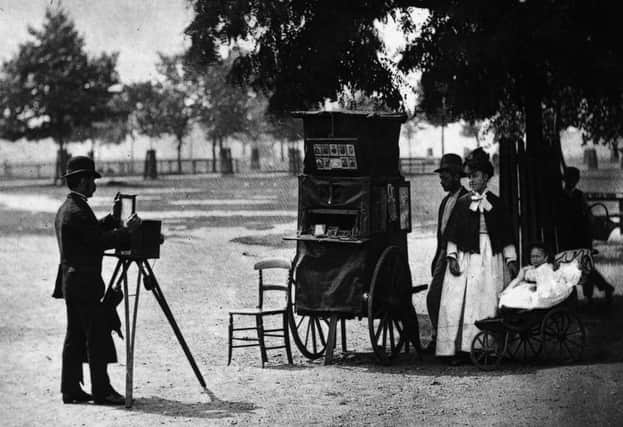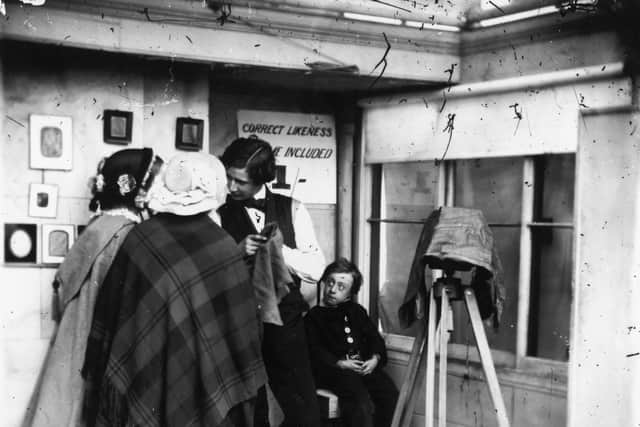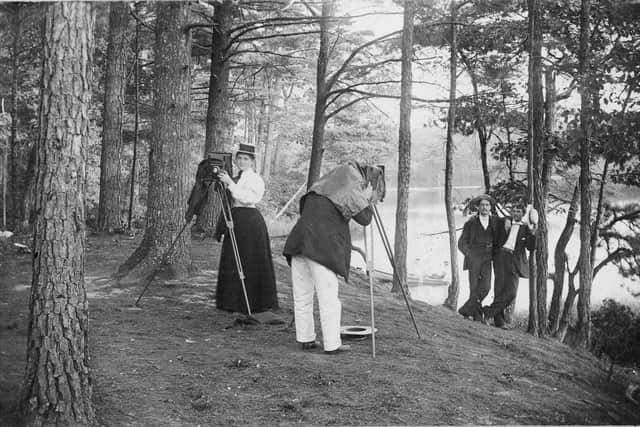Pictures while you wait and the first traffic cam – early photography exposed


For the first photographers, “instant” meant as long as it took to take the glass plates into the darkroom and expose them to the necessary chemicals. Nevertheless, as early as 1928 – long before the Polaroid camera was invented – a photographer called Sydney Garbutt had set himself up as the “while you wait man” in Trafalgar Square.
At around the same time, the Scottish photographer and inventor Alex Stewart was marketing the first commercially produced flashbulb, and the Chief Constable of Lancaster was issuing his roadside patrols with enormous box cameras made of wood and leather to try to catch out dangerous drivers.
Advertisement
Hide AdAdvertisement
Hide AdPhotography had already come a long way since the first enthusiasts took to the great outdoors – it was too dark inside — only to disappear under their black camera hoods while they adjusted the lens. They were following in the footsteps of the Dorset scientist William Fox Talbot, who invented the system of photography which endured until the digital age and which is preferred by some photographers even today. An artist as well as an innovator, his images of mid-19th century Britain are among the earliest in existence and constitute a unique historical record.


Less well-known is his contemporary, Anna Atkins, one of the earliest female photographers, who produced the first book that used photos for illustrations. Meanwhile, Julia Margaret Cameron was taking some of the first portraits, with a list of “sitters” that would have made even Lord Snowdon jealous. Charles Darwin and Alfred, Lord Tennyson were just two of them.
Editor’s note: first and foremost - and rarely have I written down these words with more sincerity - I hope this finds you well.
Almost certainly you are here because you value the quality and the integrity of the journalism produced by The Yorkshire Post’s journalists - almost all of which live alongside you in Yorkshire, spending the wages they earn with Yorkshire businesses - who last year took this title to the industry watchdog’s Most Trusted Newspaper in Britain accolade.
Advertisement
Hide AdAdvertisement
Hide AdAnd that is why I must make an urgent request of you: as advertising revenue declines, your support becomes evermore crucial to the maintenance of the journalistic standards expected of The Yorkshire Post. If you can, safely, please buy a paper or take up a subscription. We want to continue to make you proud of Yorkshire’s National Newspaper but we are going to need your help.


Postal subscription copies can be ordered by calling 0330 4030066 or by emailing [email protected]. Vouchers, to be exchanged at retail sales outlets - our newsagents need you, too - can be subscribed to by contacting subscriptions on 0330 1235950 or by visiting www.localsubsplus.co.uk where you should select The Yorkshire Post from the list of titles available.
If you want to help right now, download our tablet app from the App / Play Stores. Every contribution you make helps to provide this county with the best regional journalism in the country.
Sincerely. Thank you.
James Mitchinson, Editor
Comment Guidelines
National World encourages reader discussion on our stories. User feedback, insights and back-and-forth exchanges add a rich layer of context to reporting. Please review our Community Guidelines before commenting.